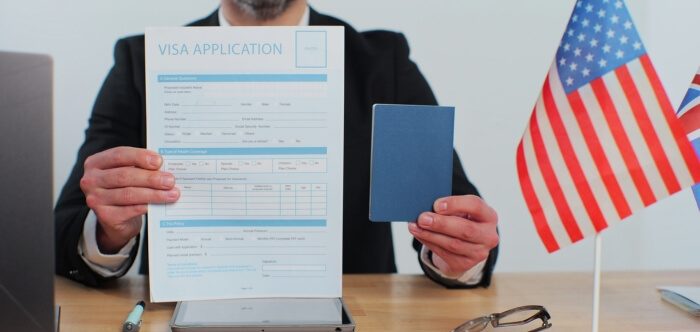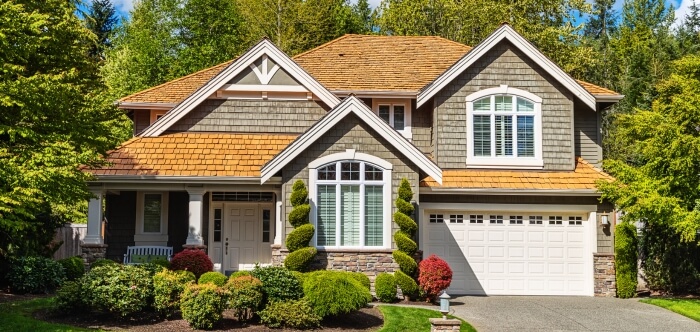Managing the complexities of the visa application process can often be daunting, with many individuals left wondering about the timeframe post-interview. In that case, how long does it take to get US visa after interview? you might ask.
Well, once your visa application is approved during the interview, it typically takes between 5-7 working days for processing. But that’s not all! To ensure you receive your visa without any hitches, it’s wise to factor in an additional 2-3 workdays for delivery.
This makes it imperative to plan your travel and other activities accordingly. Curious about the intricacies and tips to expedite this process? Dive deeper into this article to unravel all the details and enhance your visa journey.
US Visa Application Process – You Should Know
The US visa application process is a structured journey that ensures candidates meet specific criteria before entering the country. Applicants must choose the appropriate visa category, which varies based on the purpose of travel, such as tourism, work, or education.
The same process goes when attending an international conference in the USA from outside of the USA, you have to go through an interview process. This initial step is critical as the visa category guides the subsequent procedures and requirements.
Once the category is identified, applicants proceed to start on filling out the DS-160 form online. This comprehensive form captures personal, educational, and employment details, serving as a foundational document for the application. After submission, a confirmation page is generated, which should be printed and kept for the interview stage.
The final and perhaps most nerve-wracking step is the visa interview. Candidates need to schedule this at a US embassy or consulate and pay the associated fees. During the interview, the consular officer assesses the applicant’s eligibility, examines documents, and seeks clarifications. If approved, processing and delivery times follow, culminating in the much-anticipated visa grant.
Average Processing Times by Visa Type
Understanding the various categories of processing periods is essential for managing the complex visa application process. diverse wait periods, different visa classes, and varied reasons. Let’s explore the average durations for different visa categories.
Tourist Visa (B-2)
The B-2 visa, popular for leisure visits, usually takes 3-5 weeks to process. This duration may vary based on application volume. It’s wise to apply well in advance. Seasonal spikes might extend the waiting time.
Business Visa (B-1)
Intended for short business trips, the B-1’s processing is similar to B-2’s, spanning 3-5 weeks. Consular workloads can influence this timeframe. As always, early applications can prevent potential delays. Business trips should be planned accordingly.
Work Visa (H-1B)
H-1B visas, catering to specialized workers, have a cap and a lottery system. This often extends processing to 3-6 months. Early applications are crucial, especially during the cap season. Regular processing times might vary each year.
Student Visa (F-1)
Aspiring students often apply for the F-1 visa. Typically, it takes 3-5 weeks after the school’s acceptance. Timelines might extend during peak student intake seasons. In that case, you can consider applying for a visa support letter. It’s essential to factor this when planning academic pursuits.
Exchange Visitor Visa (J-1)
J-1 visas are designed for participants in cultural and educational exchange programs. The average processing spans 3-5 weeks. However, application traffic and program specifics might influence this. Applicants should keep potential variations in mind.
Fiancé(e) Visa (K-1)
The K-1 visa, meant for a fiancé(e) of a US citizen, is a unique category. Processing times can stretch from 6-9 months. This visa type demands meticulous documentation, influencing its duration. Patience is vital during this wait.
It is helpful to understand the average processing time of each visa in order to plan ahead and have a smoother experience. While these are general guidelines, individual cases might differ, making timely applications paramount.
How Long Does it Take to Get US Visa After Interview?
Securing an interview for a US visa is an exciting milestone, but it’s only a part of the journey. The next pressing question many applicants have is, how long does it take to get US visa after interview? Let’s break down the post-interview processing times for clarity.
General Processing Time
Once a visa interview concludes positively, most visas take 5-7 working days to process. This is a standard timeframe, but variations can occur. Factors like application volume and seasonal fluctuations can influence it. Remember, this doesn’t include delivery time.
Delivery Time Considerations
After visa approval, the passport return usually takes an extra 2-3 workdays. Delivery methods can vary based on location and preferences. It’s wise to consider potential postal delays. Tracking the delivery is often possible and advisable.
Administrative Processing Delays
In some cases, visas undergo administrative processing, extending wait times. This additional vetting can take weeks or even months. The reasons for this remain largely undisclosed to applicants. Staying patient and periodically checking status updates is beneficial.
Seasonal Application Spikes
Certain times of the year see heightened visa applications. Summer holidays and festive seasons can lead to minor delays. Keeping this in mind, applying off-peak can ensure quicker turnarounds. Researching peak application periods aids in strategic planning.
Visa Type Variations
Different visa categories might have slightly varied processing durations. For instance, work visas might need additional vetting. Tourist visas usually stick to the general 5-7 day window. Familiarizing oneself with visa-specific timelines is prudent.
Ensuring Documentation Accuracy
Accurate and complete documentation expedites the visa process. Any discrepancies can cause unforeseen delays. Review all documents before the interview. This proactive approach minimizes potential post-interview hitches.
The general processing time post-interview hovers around 5-7 working days, several factors can influence this. Being aware of these elements and planning accordingly ensures a smoother and more predictable visa acquisition journey.
How to Reduce US Visa Processing Time?
Applying for a US visa can be a difficult process, particularly if time is of the essence. However, did you know that this trip may be accelerated in some way? Here’s a step-by-step guide on how to reduce the US visa processing time.
Step-1. Begin Early with Documentation Gathering
Start by accumulating all the required documents well in advance. This ensures you don’t waste time searching for essentials last minute. Remember, missing or incomplete documentation can lead to delays. Systematic collection streamlines your application.
Step-2. Use Premium Processing Services
Certain visa categories, like H-1B, offer premium processing. This service guarantees a response within 15 calendar days. Though it comes at an extra cost, the swift processing can be invaluable. Carefully consider if it’s a suitable option for you.
Step-3. Apply During Off-Peak Seasons
Visa application volumes can vary seasonally. Applying during lower-demand periods might result in quicker processing. Understand the peak times, such as summer holidays, and strategize. An off-peak application can significantly reduce waiting time.
Step-4. Attend Early Morning Interviews
Opting for early morning interview slots can be beneficial. Morning sessions often experience fewer delays than afternoon ones. This ensures your application begins processing the same day. Consulates are generally less crowded, making the experience smoother.
Step-5. Ensure Accurate and Honest Information
Accuracy and transparency in your application and interview can prevent delays. Discrepancies or inconsistencies might lead to additional vetting. Always cross-check details before submission. Honest communication minimizes potential setbacks.
Step-6. Check for Expedite Criteria
In specific situations, you might qualify for expedited visa processing. This can be due to medical emergencies, unforeseen business requirements, or other valid reasons. Understand the criteria and apply if you’re eligible. Genuine reasons might lead to quicker processing.
Step-7. Stay Updated and Respond Promptly
Post-interview, regularly check your application status. If the consulate requests additional information, respond swiftly. Delays in your response can extend the processing time. Being proactive ensures you’re always a step ahead.
By adopting these strategic steps, applicants can potentially streamline and expedite their US visa processing journey. Remember, while these tips can assist, they don’t guarantee instant approval. Still, every effort to reduce time is a move in the right direction.
Tips and Preparations For Living In The United States
Relocating to the United States can be both thrilling and challenging, demanding a blend of preparation and adaptability. To make the transition smoother, consider some key tips and preparations. Here’s a guide to kickstart your American journey:
- Research Housing Options: Secure housing before arriving, even if temporary. Websites like Zillow or Apartments.com can be helpful. Consider proximity to work or school.
- Open a Bank Account: Many daily activities require a local bank account. Research and choose a bank fitting your needs. This aids in managing finances smoothly.
- Understand Healthcare: The US healthcare system is complex. Get health insurance, as medical care can be expensive. Research plans suitable for your situation.
- Obtain a Driver’s License: Public transport varies by city. If driving, acquire a US driver’s license. Research the specific requirements of your state.
- Embrace Cultural Differences: The US is diverse. Cultures, customs, and social norms can vary. Engage openly, learn, and respect these differences.
- Get Familiar with Taxes: Taxation might differ from your home country. Understand federal, state, and local tax obligations. Consider consulting a tax professional initially.
- Build Credit History: A good credit score is essential for various services. Obtain a credit card and pay bills promptly. Monitor your credit score regularly.
- Stay Connected Locally: Join community groups or clubs. Engage in local events and networks. This helps in building connections and friendships.
- Learn the Imperial System: The US uses the imperial system. Familiarize yourself with miles, pounds, and Fahrenheit. Conversion apps can be handy initially.
- Be Open to Adjustments: Relocation can be emotionally challenging. Accept that adjustments and homesickness are natural. Give yourself time and seek support when needed.
Equipped with these tips, newcomers can navigate their initial days in the US with more confidence. Staying informed, building local connections, and accepting change can significantly enhance the settling-in process.
Conclusion
Many would-be applicants have trouble with one crucial question, how long does it take to get US visa after interview? and find that navigating the US visa application process is like walking through a maze. You usually have to wait 5-7 working days for processing after passing the interview. But that is only a small part of the picture. It can be just as important to take into account delivery schedules, documentation correctness, and seasonal fluctuations.
Meanwhile, setting roots in the United States isn’t just about securing that visa. It’s a tapestry of housing decisions, adapting to a new healthcare system, and immersing oneself in a rich tapestry of diverse cultures. It’s essential to be well-prepared and open to learning.
In essence, while the path to getting a US visa and subsequently adjusting to American life might seem daunting, it’s entirely manageable. Armed with the right knowledge and a touch of patience, one can make this journey smooth and truly rewarding.








